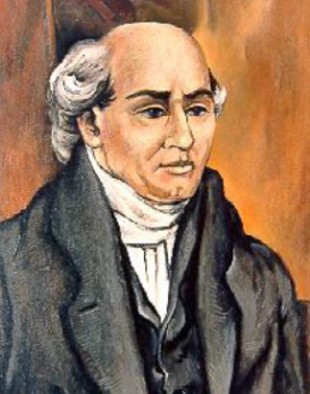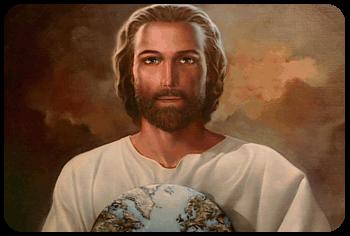
|
|
 |
|
**List: Sanskrit Ministry the Bible ( the Bible )
SANSCRIT. DR. CAREY'S VERSION.--1860 S. Bagster [Info only: Devanagari Character n.d. John 1:1-14 unknown.] |

Sanskrit Bible History (3) 
**List: Sanskrit Ministry
the Bible ( the Bible )
Sanskrit...
"IV.--SANSCRIT VERSIONS OF THE SCRIPTURES. It seems to have been by the special interposition of Providence that the means of effecting a
translation of the Scriptures into Sanscrit were provided at the precise period when the first attempt
was made to commence this important work. Only a few years previous to the arrival of the [respect]able
Carey in India, Sanscrit was almost inaccessible to Europeans. Sir William Jones, by large pecuniary
payments which would have been beyond the means of the my., secured the services of a pundit
in elucidating the principles of the language; and the works afterwards prepared by this celebrated
orientalist, and by others who followed in the same track, removed the apparently insuperable difficulties
which had placed the Sanscrit language beyond the reach of ordinary students. The care of Provi-
dence in providing means for printing the Scriptures in the languages of India is also remarkable, for
no Sanscrit work had ever been committed to the press until a few years prior to the translation of the
Scriptures into that language, when Dr. Wilkins succeeded in constructing a fount of types in Indian
characters. A native, formerly in his service, communicated the invention to the mies. at
Serampore, and with his aid types were cast for printing the Scriptures in no less than twelve of the
alphabets used in various parts of India. The Sanscrit New Testament was commenced in 1803, andfinished at press in 1808; the edition consisted of 600 copies. The printing of this edition was com-
menced in 1806, and in the same year the Rev. David Brown, provost of the College of Fort William,
sent a specimen of it to the Committee of the British and Foreign Bible Society in London. In his
accompanying letter he remarked respecting this version, that "the Sanscrit answers to Greek as face
answers to face in a glass; the translation will be perfect while it is almost verbal. You will find the
verb in the corresponding mood and tense, the noun and adjective in the corresponding case and
gender. The idiom and government are the same: when the Greek is absolute, so is the Sanscrit;
and in many instances the primitives or roots are the same." Dr. Carey tells us that he translated this
version immediately from the Greek, and that he afterwards in conjunction with Dr. Marshman, com-
pared each sentence with the Greek text. All his other translations were in the first place written out
roughly for him by native pundits, and then submitted to him for correction and revisal, but he
dictated the Sanscrit himself to an amanuensis.
Dr. Carey had made some progress in the translation of the Old Testament into Sanscrit, when
the disastrous fire at Serampore in 1812 interrupted his labours. In this fire a dictionary of the Sans-
crit and various Indian dialects, laboriously compiled by Dr. Carey, was consumed, and likewise the
Sanscrit MSS. of the Second Book of Samuel and of the First of Kings. In the year 1815
Dr. Yates arrived in India, and was associated with Dr. Carey in the work of translating the Scrip-
tures. The proofs of the Sanscrit Old Testament, then passing through the press, were all examined
by him, and compared with the Hebrew, and he subsequently in concert with Dr. Carey, subjected
them to a second revisal. The Old Testament was issued in portions at different periods in the
following order:--A.D. 1811-- 600 copies of the Sanscrit Pentateuch.
In 1820, a second edition of the New Testament was undertaken at Serampore, the former edition
1815--1000 copies of the Historical Books in Sanscrit.
1818--1000 copies of the Hagiographa.
1822--1000 copies of the Prophetic Books.
having been completely exhausted. As numerous applications for copies of the Sanscrit Scriptures
had been made by the literati of India, especially by those in the western provinces, this edition was
extended to 2000 copies. In 1827 a second edition of the Old Testament, to consist of 2000 copies,
was in the press, but various circumstances retarded its completion; and in 1834, the date of the
Tenth Memoir of Serampore Translations, the impression had been struck off only as far as the First
Book of Kings.
In determining the value of Dr. Carey's Sanscrit version, it must be remembered that it was
undertaken at a period when the language had been little studied by Europeans, and when no printed
copies of the standard works were in existence. Yet, notwithstanding the disadvantages under which
he laboured, Dr. Carey seldom fails in point of fidelity or correctness. His defects, it has been well
remarked, are mainly to be attributed to "the principle which appears to have influenced all the
Serampore versions--that of translating as closely to the letter of the text as possible; a rigour of
fidelity that cannot fail to cramp and distort the style of the translator." The inelegance and harsh-
ness of Dr. Carey's diction rendered his version unpopular with the learned men of India, and the
desirableness of obtaining a new and more polished translation of the Scriptures soon became apparent.
In 1835 a statement to this effect was laid before the Committee of the Society for the Promotion of
Christian Knowledge. The committee entered into communication on the subject with the Bishop of
Calcutta, and with Dr. Mill, then principal of Bishop's College, and authorised them to take such
measures as they might deem proper for effecting a new version of the Scriptures into Sanscrit.
Dr. Mill had previously paved the way for this important undertaking by publishing a Sanscrit
Glossary of theological terms; yet, with the exception of a truly classical work prepared by that eminent
scholar, and entitled the Christa-Sangítá, or the Sacred History of our Lord Jesus Christ, no attempt
appears to have been made under the patronage of the Society to carry the proposed version intoexecution. Two editions of the Sermon on the Mount in Sanscrit verse, which originally appeared as
"--The Bible of Every Land. (1860, Second Edition) Samuel Bagster [Info only]
the twelfth canto of the second book of the Christa-Sangítá, were afterwards published, the one in
Devanagari, and the other in Bengalee letters.SANSCRIT. DR. CAREY'S VERSION.--1860 S. Bagster [Info only: Devanagari Character n.d. John 1:1-14 unknown.]
[Christian Helps Ministry (USA)] [Christian Home Bible Course]